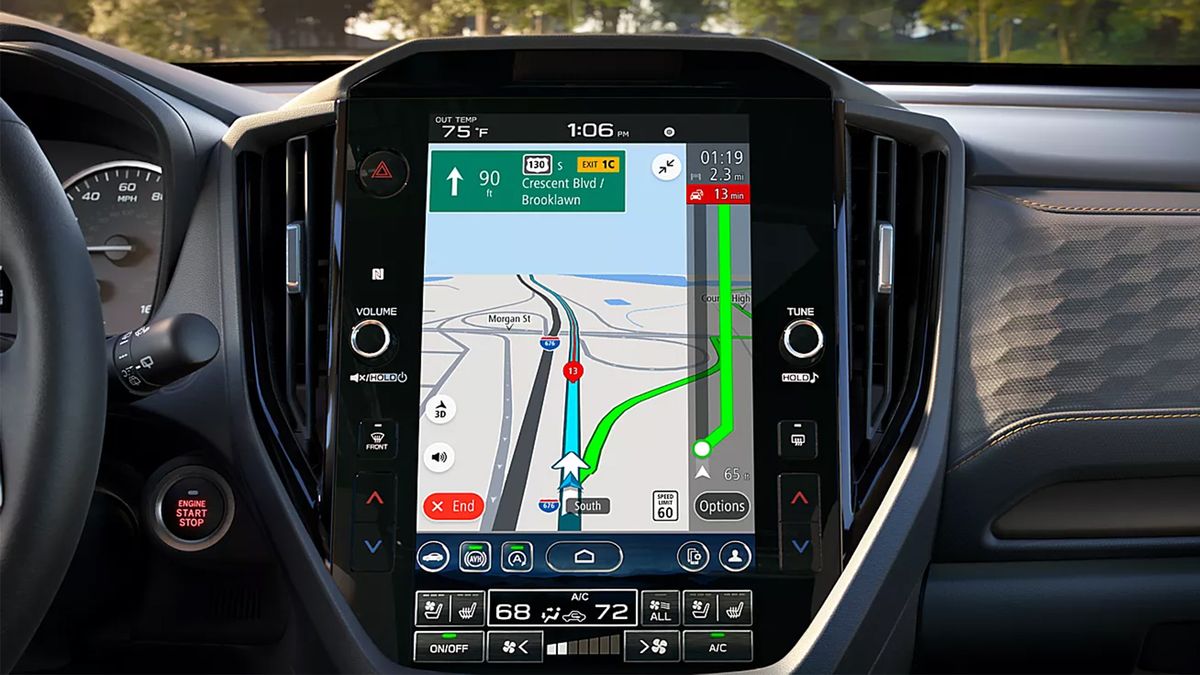Sure, President-elect Donald Trump is probably going to try to blow up efforts to tackle climate change as soon as he steps into office. There still isn’t enough renewable energy available to reach US climate goals or even meet skyrocketing electricity demand from AI. And time is running out to spend down climate funds from the Inflation Reduction Act before the Trump administration can attempt to claw it back. Despite it all, Joe Biden’s top adviser on climate change, Ali Zaidi, isn’t sweating it.
He’s managed to keep the perhaps cloyingly upbeat optimism that’s become a trademark of the Biden and Harris camp even when that enthusiasm doesn’t necessarily reflect sentiment on the ground. The Verge spoke with White House national climate adviser Zaidi this week about what he sees ahead for clean energy technologies and where there might still be room for progress.
This interview has been edited for length and clarity.
You have a background in law. How did climate change become your thing?
I came to the United States at the age of six, and for me, for my family, the story of America is the story of economic mobility. I really came to Washington wanting to work on putting more rungs in the ladder into the American dream, and it turns out that the biggest economic opportunity of the moment is tackling this crisis that impacts the most vulnerable Americans and the most vulnerable folks around the world.
I did not come to this work from the tree hugging side of the movement. I came to it with real, deep conviction that this was my way to give back to the economic opportunity engine that this country has been for so many who strive to reach the American dream.
President-elect Donald Trump says he’ll take the US out of the Paris climate accord and “drill, baby, drill.” How worried are you about the Trump administration undoing progress the US has made on clean energy?
You know, I think that US progress will continue in a pretty robust way. This project is not just a project about climate and reducing emissions. It’s a project of invigorating our energy security and bringing economic revival to places that have been left out and left behind.
The incentive to finish the job is stronger because the incentive is shared, and that’s how we’ve structured it on purpose. The other thing that I think is really powerful is that we’ve really set out a tech-agnostic race to net zero emissions as the North Star.
When we talk about decarbonizing the electricity grid, making it more modern, making it more resilient, sometimes that conversation is caricatured as a conversation about solar and wind. But look at what’s been happening in the United States, you’ve got a mega project now under construction in Utah. It’s a two gigawatt project, the size of the Hoover Dam in terms of electricity that’s going to produce power from hot rocks under our feet — geothermal energy. You’ve got wind, not just being deployed on the plains as it has been for decades, but now delivering electricity from offshore.
You have a nuclear renaissance taking place in the United States, the first new nuclear reactor in decades. I was there in Georgia as it came online. Plants that have been retired, like the Palisades plant in western Michigan. I went to the Palisades plant coming out of retirement, the workers coming out of retirement to bring electricity back to the grid and the next generation of reactors.
We, as a federal government, should be a partner in helping catalyze all of that progress, whatever shape it takes. And you see that repeated in other sectors. With the transportation sector, it doesn’t matter to us if it’s strong, hybridization, fully electric, hydrogen, sustainable aviation, or biofuels. What we care about is two things: bending the curve of emissions and widening the aperture for economic opportunity.
The culture war over clean energy often swirls around this idea of individual choice — I should be able to choose to drive a gas-guzzling car if I want to or cook on a gas stove instead of going electric. What’s your take on that?
We have to meet people where they are as we take on the climate crisis, period, full stop. One of the things that the world has learned so clearly about decarbonization is that there is no social license for decarbonization pathways that put upward pressure on consumer prices. So part of decarbonization has to be about making people’s lives better, delivering a better product, winning them over.
We saw this with LEDs. I was around at the beginning of the Obama administration when, for the first time, the United States got in the business of manufacturing LED lightbulbs. They used to cost a lot of money, but there was a technology cost curve there. And because we invested in it, the US was able to help make those cheaper and more affordable, and it turned out to be a better product. And now, across the country that technology is ubiquitous. I think that’s the way we win the future, is by delivering people a better product that also, by the way, doesn’t pump a bunch of pollution into the sky.
Countries that have signed onto the Paris agreement are supposed to update their national climate plans this year, and the Biden administration submitted a more ambitious plan last month of cutting greenhouse gas emissions by more than 60 percent by 2035. How can the US still achieve that goal?
I think the way we go the distance and meet this next target in 2035 is by continuing to invest in America, and here’s what that looks like. The farm bill will be in front of the Congress. It’s overdue, but it will be in front of this next Congress. They have an opportunity to act on whether they invest in increased total factor productivity in the agricultural sector. Turns out precision agriculture is also climate-smart agriculture. So will Congress, through the farm bill, invest more into climate-smart agriculture, into precision agriculture technologies, into the things that shore up the economics of our family farmers and boost the competitiveness of the sector?
What we’re seeing at the state level is a massive mobilization to continue to accelerate decarbonization on the grid and in the transportation sector. There’s also this incredible industrial capacity. When we came into office, you barely made any batteries in the United States. Tesla, maybe a few others, but very limited battery capacity. By 2030, factories that are already underway, either operating or in construction, will have the capacity to manufacture 10 million vehicles’ worth of batteries in the United States. We sell, on average, 15 million vehicles a year. I think you’ll actually see private capital continue to build on the momentum of that transformation.
And so another reason we think we’re going to keep picking up momentum is because private capital sees the win and is actually going to continue to make that bet in sectors like power and transportation. Clean energy is literally cheaper than dirtier power. And so that’s just where the smart money is going. In 2024, for example, we expect that 96 percent of what will have been built will be clean energy.
I think what we will need to do more of as a country — and that means state and local as well — is help families cut their utility bills at home. There’s this massive opportunity in our built environment to reduce energy waste and put consumers in control of their energy bills. And if we do that, that’s obviously great retail-level economics. It’s also going to be a big win for the climate.
When it comes to lowering Americans’ utility bills and taking action on climate change, one of the concerns I hear a lot about is AI and the energy demand of data centers. How are you thinking about that?
I’ve joined meetings with CEOs of the technology firms. I’ve also met with CEOs from the electricity sector. There is a consensus in industry and there is a consensus in the US government that we will and must seize the leadership opportunity in the development of AI technologies. And that means we must take away the barriers deploying clean power on the grid that is necessary to facilitate the buildout of these data centers.
I have full confidence, not only in the federal government and in the technology entrepreneurs and their companies, but in state and local governments that they see the economic opportunity, they see the security imperative, and they also get that deploying clean power in almost all cases will be the cheapest, fastest, and safest way to get electricity to these new data centers.
And so I don’t see these objectives at cross purposes with one another. I actually see AI as an accelerant to our ambition on the electricity grid. AI as an accelerant to advance grid modernization. This is a massive opportunity. But I also am the person who often sees opportunity in headwinds. So maybe that’s my bias.
We have to talk about the Inflation Reduction Act — the biggest piece of climate legislation to date, creating $369 billion for climate action and clean energy. But Trump says he’ll rescind any unspent funds. How much is left to dole out?
Very little. I remember this was a Google doc on my computer back in the summer of 2020 and Zoom calls with, at the time, the candidate. One of the big things that we did when we were designing what became the Inflation Reduction Act was to make sure it was structured in a way that reached every part of the economy. That it was structured in a way where the IRA came in, or the government came in, as booster packs to a rocket. The rocket was the private sector. And I think what you find with the Inflation Reduction Act now is that the rocket’s achieved escape velocity in so many parts of the economy. You’ve got 100 gigawatts of energy that relied on these tax credits to get off the ground, but now it’s up in the air. It’s flying. You can’t put that back in the bottle.
On the unspent funds, we are at a place where we’re north of $9 out of every $10 of grant funding and other similar dollars that have already hit the economic bloodstream across the country.
The question then becomes, do you want to go and unplug economic opportunity that is now responsible for thousands of factory jobs and construction jobs all across the country? And I think that’s both a challenging economic proposition and also a very challenging political proposition. It’s why what you’ve heard even in Congress is that maybe they are interested in a scalpel approach, if I’m quoting the incoming speaker. That is still quite challenging. The way I think about it is, you know, Jenga blocks. When you’re pulling the blocks out of a Jenga tower, you don’t know which one is going to threaten the structural integrity of the whole thing.
We are in a moment of economic uplift and revitalization, a manufacturing renaissance. America at the frontier of energy security and energy technology, finally fighting to win the global competition and pulling along jobs and opportunity at the local level. I don’t know that I would want to be in the business of pulling blocks out of the Jenga tower, but we will leave that to the judgment of the team that comes in in a few weeks.

 2 weeks ago
7
2 weeks ago
7








 English (US) ·
English (US) ·